DNA Center Questions
|
DNA Center Quick Summary Software-Defined Access (SDA) uses the software-defined architectural model, with a controller and various APIs. At the center sits the Digital Network Architecture (DNA) Center controller.
Note: + REST API (Representational State Transfer API) is a web service architecture that provides a standard way for clients to communicate with servers over the web. It is based on the HTTP protocol and uses the concepts of resources (represented by URIs) and HTTP methods (GET, POST, PUT, DELETE) to interact with them. + RESTCONF, on the other hand, is a protocol that provides a programmatic interface to network devices using RESTful architecture. It is built on top of RESTful principles and is designed specifically for network management. RESTCONF provides a standardized way to access and manipulate network configuration data, state data, and operational data using HTTP methods. DNA Center is the controller for SDA networks. The southbound side of the controller contains the fabric, underlay, and overlay: Overlay: The mechanisms to create VXLAN tunnels between SDA switches, which are then used to transport traffic from one fabric endpoint to another over the fabric.
Underlay: The network of devices and connections (cables and wireless) to provide IP connectivity to all nodes in the fabric, with a goal to support the dynamic discovery of all SDA devices and endpoints as a part of the process to create overlay VXLAN tunnels.
The relationship between Overlay and Underlay is shown below:
Fabric: The combination of overlay and underlay, which together provide all features to deliver data across the network with the desired features and attributes Cisco DNA Center is a software solution that resides on the Cisco DNA Center appliance. The solution receives data in the form of streaming telemetry from every device (switch, router, access point, and wireless access controller) on the network. This data provides Cisco DNA Center with the real-time information it needs for the many functions it performs. Cisco DNA Center collects data from several different sources and protocols on the local network, including the following: traceroute; syslog; NetFlow; Authentication, Authorization, and Accounting (AAA); routers; Dynamic Host Configuration Protocol (DHCP); Telnet; wireless devices; Command-Line Interface (CLI); Object IDs (OIDs); IP SLA; DNS; ping; Simple Network Management Protocol (SNMP); IP Address Management (IPAM); MIB; Cisco Connected Mobile Experiences (CMX); and AppDynamics. Cisco DNA Center offers 360-degree extensibility through four distinct types of platform capabilities: + Intent-based APIs leverage the controller and enable business and IT applications to deliver intent to the network and to reap network analytics and insights for IT and business innovation. The Intent API provides policy-based abstraction of business intent, allowing focus on an outcome rather than struggling with individual mechanisms steps. For example, the administrator configures the intent or outcome desired of a set of security polices. The DNA Center then communicates with the devices to determine exactly the required configuration to achieve that intent. Then the complete configuration is sent down to the devices. DNA Center APIs Cisco DNA Center APIs are grouped into four categories: northbound, southbound, eastbound and westbound: |
Question 1
Question 2
Explanation
A complete Cisco DNA Center upgrade includes “System Update” and “Appplication Updates”
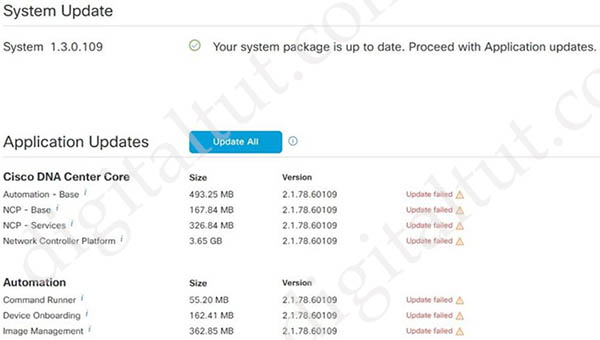
Question 3
Explanation
Cisco DNA Center provides an interactive editor called Template Editor to author CLI templates. Template Editor is a centralized CLI management tool to help design a set of device configurations that you need to build devices in a branch. When you have a site, office, or branch that uses a similar set of devices and configurations, you can use Template Editor to build generic configurations and apply the configurations to one or more devices in the branch.
Question 4
Question 5
Explanation
The Cisco DNA Center open platform for intent-based networking provides 360-degree extensibility across multiple components, including:
+ Intent-based APIs leverage the controller to enable business and IT applications to deliver intent to the network and to reap network analytics and insights for IT and business innovation. These enable APIs that allow Cisco DNA Center to receive input from a variety of sources, both internal to IT and from line-of-business applications, related to application policy, provisioning, software image management, and assurance.
…
Question 6
Explanation
You can create a network hierarchy that represents your network’s geographical locations. Your network hierarchy can contain sites, which in turn contain buildings and areas. You can create site and building IDs to easily identify where to apply design settings or configurations later.
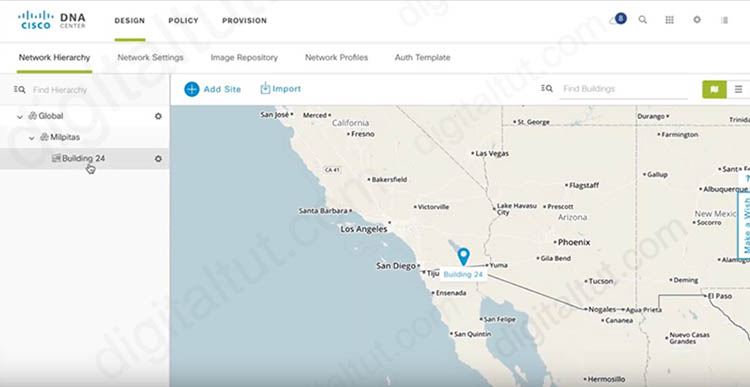
Question 7
Question 8
Explanation
The Intent API is a Northbound REST API that exposes specific capabilities of the Cisco DNA Center platform.
The Intent API provides policy-based abstraction of business intent, allowing focus on an outcome rather than struggling with individual mechanisms steps.
Question 9
Explanation
Cisco DNA Center allows customers to manage their non-Cisco devices through the use of a Software Development Kit (SDK) that can be used to create Device Packages for third-party devices.
Question 10
Explanation
If your network uses Cisco Identity Services Engine for user authentication, you can configure Assurance for Cisco ISE integration. This enables you to see more information about wired clients, such as the username and operating system, in Assurance.

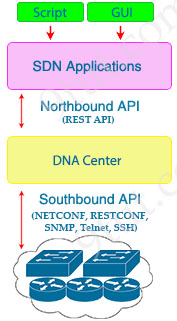

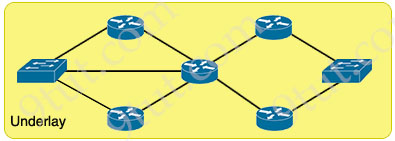
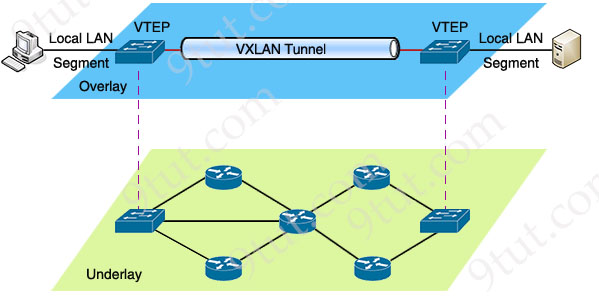


@Digitaltut
I think the answer should be C as it is not mandatory for ip-based groups to have ISE for group creation and the site option is used when you create the ip-based policy to denote where the policy will be applied (to wired or wireless devices in the site)!
The note you have mentioned applies for group-based polices from the link you have provided! Please confirm!!
Which devices does Cisco DNA Center configure when deploying an IP-based access control policy?
A. All devices integrating with ISE
B. selected individual devices
C. all devices in selected sites
D. all wired devices
Q.10 Cisco DNA Center has obtained the username of the client and the multiple devices that the client is using on the network. How is Cisco DNA Center getting these context details?
A. Those details are provided to Cisco DNA Center by the Identity Services Engine
B. The administrator had to assign the username to the IP address manually in the user database tool on Cisco DNA Center
C. User entered those details in the Assurance app available on iOS and Android devices
D. Cisco DNA Center pulled those details directly from the edge node where the user connected
Answer D is confusing with A
why questions are not shown?
@Anonymous
Please refer https://www.digitaltut.com/encor-faqs-tips, Q11.
The answer for question 10 is definitely wrong. It’s not D. The right one is A.
Q10
Should be A????
If your network uses Cisco Identity Services Engine for user authentication, you can configure Assurance for Cisco ISE integration. This enables you to see more information about wired clients, such as the username and operating system, in Assurance.
https://www.cisco.com/c/en/us/td/docs/cloud-systems-management/network-automation-and-management/dna-center-assurance/2-1-2/b_cisco_dna_assurance_2_1_2_ug/b_cisco_dna_assurance_2_1_1_ug_chapter_011.html
Q10, agree correct answer is A. Those user information is provided by ISE, if customer integrated ISE for AAA authentication function for their network.
source: https://www.cisco.com/c/en/us/td/docs/cloud-systems-management/network-automation-and-management/dna-center-assurance/2-1-2/b_cisco_dna_assurance_2_1_2_ug/b_cisco_dna_assurance_2_1_1_ug_chapter_011.html#id_110261
Q10 answers is D or A?
Please confirm the answer to the below question.
Which devices does Cisco DNA Center configure when deploying an IP-based access control policy?
A. All devices integrating with ISE
B. selected individual devices
C. all devices in selected sites
D. all wired devices
The answer is C or A?
Which devices does Cisco DNA Center configure when deploying an IP-based access control policy?
all devices in selected sites
@Digitaltut
Please confirm answers to Questions 4 and 10
Q4: all devices in selected sites OR All devices integrating with ISE
Q10: Those details are provided to Cisco DNA Center by the Identity Services Engine OR Cisco DNA Center pulled those details directly from the edge node where the user connected
@Anonymous: We reviewed Q4 & Q10 and correct them. For Q4 the correct answer should be C while for Q10 the correct answer should be A.
@Digitaltut
If possible could you please update in the pdf as well
https://www.digitaltut.com/encor-questions-and-answers
Thanks for your help
To clearfy about q4
The correct answer is C 100%
Question 4
Which devices does Cisco DNA Center configure when deploying an IP-based access control policy?
A. All devices integrating with ISE
B. selected individual devices
C. all devices in selected sites
D. all wired devices
Answer: C
Here is explination
* Answer A is for: Group-Based Access Control
* Answer C is for IP-Based Access Control Policie
https://www.cisco.com/c/en/us/td/docs/cloud-systems-management/network-automation-and-management/dna-center/1-2/user_guide/ b_dnac_ug_1_2/b_dnac_ug_1_2_chapter_01000.html#id_53453
@digitaltut please add this explination
What are three primary focus areas for Cisco DNA Center Assurance and Analytics? (Choose three.)
end-to-end visibility
endpoint predictability
predict performance
streaming telemetry
licensing
automation
What are three primary focus areas for Cisco DNA Center Assurance and Analytics? (Choose three.)
Correct answer from ENCOR Training:
end-to-end visibility
predict performance
streaming telemetry
@NetworkTut:
Question 6
An engineer uses the Design workflow to create a new network infrastructure in Cisco DNA Center. How is the physical network device hierarchy structured?
A. by location
B. by role
C. by organization
D. by hostname naming convention
Answer: A
Explanation
You can create a network hierarchy that represents your network’s geographical locations. Your network hierarchy can contain sites, which in turn contain buildings and areas. You can create site and building IDs to easily identify where to apply design settings or configurations later.
Reference: https://www.cisco.com/c/en/us/td/docs/cloud-systems-management/network-automation-and-management/dna-center/1-2-5/user_guide/b_dnac_ug_1_2_5/b_dnac_ug_1_2_4_chapter_0110.html
In the explanation of Q6 the link is not anymore Up2date, it returns the following:
Sorry — we can’t find that page.
Is it possible to Update the link? Thanks for your effort